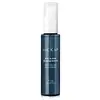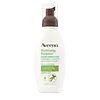What's inside
What's inside
 Key Ingredients
Key Ingredients

 Benefits
Benefits

 Concerns
Concerns

 Ingredients Side-by-side
Ingredients Side-by-side

Water
Skin ConditioningGlycerin
HumectantSodium Cocoyl Glutamate
CleansingCocamidopropyl Betaine
CleansingPEG-6 Caprylic/Capric Glycerides
EmulsifyingSodium Chloride
MaskingLactobionic Acid
BufferingSalicylic Acid
MaskingLactic Acid
BufferingNiacinamide
SmoothingAlteromonas Ferment Extract
Skin ConditioningSodium PCA
HumectantMagnesium PCA
HumectantZinc PCA
HumectantManganese PCA
HumectantAllantoin
Skin ConditioningDextrin
AbsorbentPolydextrose
HumectantAmylopectin
Sodium Cocoamphoacetate
CleansingButylene Glycol
HumectantPhenoxyethanol
PreservativeEthylhexylglycerin
Skin ConditioningPotassium Sorbate
PreservativeWater, Glycerin, Sodium Cocoyl Glutamate, Cocamidopropyl Betaine, PEG-6 Caprylic/Capric Glycerides, Sodium Chloride, Lactobionic Acid, Salicylic Acid, Lactic Acid, Niacinamide, Alteromonas Ferment Extract, Sodium PCA, Magnesium PCA, Zinc PCA, Manganese PCA, Allantoin, Dextrin, Polydextrose, Amylopectin, Sodium Cocoamphoacetate, Butylene Glycol, Phenoxyethanol, Ethylhexylglycerin, Potassium Sorbate
Salicylic Acid 0.5%
MaskingButylene Glycol
HumectantCitric Acid
BufferingCocamidopropyl Betaine
CleansingDisodium EDTA
Disodium Lauroamphodiacetate
CleansingParfum
MaskingGlycerin
HumectantGlycine Soja Protein
EmulsifyingPEG-16 Soy Sterol
EmulsifyingPEG-6 Caprylic/Capric Glycerides
EmulsifyingPolysorbate 20
EmulsifyingSodium Benzoate
MaskingSodium C14-16 Olefin Sulfonate
CleansingSorbitol
HumectantWater
Skin ConditioningXanthan Gum
EmulsifyingSalicylic Acid 0.5%, Butylene Glycol, Citric Acid, Cocamidopropyl Betaine, Disodium EDTA, Disodium Lauroamphodiacetate, Parfum, Glycerin, Glycine Soja Protein, PEG-16 Soy Sterol, PEG-6 Caprylic/Capric Glycerides, Polysorbate 20, Sodium Benzoate, Sodium C14-16 Olefin Sulfonate, Sorbitol, Water, Xanthan Gum
 Reviews
Reviews

Ingredients Explained
These ingredients are found in both products.
Ingredients higher up in an ingredient list are typically present in a larger amount.
Butylene Glycol (or BG) is used within cosmetic products for a few different reasons:
Overall, Butylene Glycol is a safe and well-rounded ingredient that works well with other ingredients.
Though this ingredient works well with most skin types, some people with sensitive skin may experience a reaction such as allergic rashes, closed comedones, or itchiness.
Learn more about Butylene GlycolCocamidopropyl Betaine is a fatty acid created by mixing similar compounds in coconut oil and dimethylaminopropylamine, a compound with two amino groups.
This ingredient is a surfactant and cleanser. It helps gather the dirt, pollutants, and other impurities in your skin to be washed away. It also helps thicken a product and make the texture more creamy.
Being created from coconut oil means Cocamidopropyl Betaine is hydrating for the skin.
While Cocamidopropyl Betaine was believed to be an allergen, a study from 2012 disproved this. It found two compounds in unpure Cocamidopropyl Betaine to be the irritants: aminoamide and 3-dimethylaminopropylamine. High-grade and pure Cocamidopropyl Betaine did not induce allergic reactions during this study.
Learn more about Cocamidopropyl BetaineGlycerin is already naturally found in your skin. It helps moisturize and protect your skin.
A study from 2016 found glycerin to be more effective as a humectant than AHAs and hyaluronic acid.
As a humectant, it helps the skin stay hydrated by pulling moisture to your skin. The low molecular weight of glycerin allows it to pull moisture into the deeper layers of your skin.
Hydrated skin improves your skin barrier; Your skin barrier helps protect against irritants and bacteria.
Glycerin has also been found to have antimicrobial and antiviral properties. Due to these properties, glycerin is often used in wound and burn treatments.
In cosmetics, glycerin is usually derived from plants such as soybean or palm. However, it can also be sourced from animals, such as tallow or animal fat.
This ingredient is organic, colorless, odorless, and non-toxic.
Glycerin is the name for this ingredient in American English. British English uses Glycerol/Glycerine.
Learn more about GlycerinThis ingredient is derived from caprylic and capric acids. It is an emulsifier with emollient properties.
According to the manufacturer, it is hydrophilic and soluble in aqueous solutions (water). They also state this ingredient is stable in a medium pH range (~5 - 8).
As an emulsifier, it helps make oils and oil-soluble ingredients more soluble in water.
Learn more about PEG-6 Caprylic/Capric GlyceridesSalicylic Acid (also known as beta hydroxy acid or BHA) is a well-known ingredient for treating skin that struggles with acne and clogged pores. It exfoliates both the skin's surface and deep within the pores to help clear out buildup, control oil, and reduce inflammation.
Unlike AHAs (alpha hydroxy acids), salicylic acid is oil-soluble. This allows it to penetrate into pores which makes it especially effective for treating blackheads and preventing future breakouts.
Salicylic acid is also known for its soothing properties. It has a similar structure to aspirin and can calm inflamed or irritated skin, making it a good option for acne-prone skin that is also sensitive.
Concentrations of 0.5-2% are recognized by the U.S. FDA as an over-the-counter topical acne product.
It can cause irritation and/or dryness if one's skin already has a compromised moisture barrier, so it's best to focus on repairing that before introducing this ingredient into your routine.
While salicylic acid does not increase sun sensitivity, it’s still important to wear sunscreen daily to protect your skin.
If you are looking for the ingredient called BHA or Butylated Hydroxyanisole, click here.
Learn more about Salicylic AcidWater. It's the most common cosmetic ingredient of all. You'll usually see it at the top of ingredient lists, meaning that it makes up the largest part of the product.
So why is it so popular? Water most often acts as a solvent - this means that it helps dissolve other ingredients into the formulation.
You'll also recognize water as that liquid we all need to stay alive. If you see this, drink a glass of water. Stay hydrated!
Learn more about Water